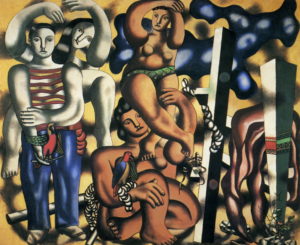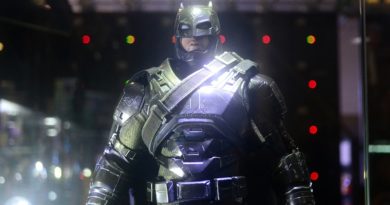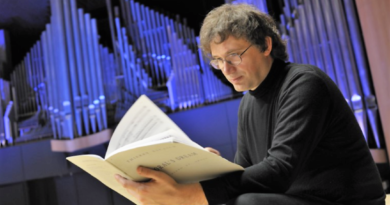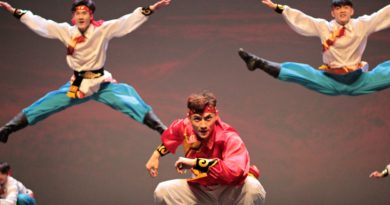Fernand Léger at Bozar: Beauty is Everywhere
A few minutes into the world of Fernand Léger and one has no choice but to submit to the audacity of his paintings and illustrations, to the astounding diversity of his interests which included circus and cinema and dance and architecture, a joy in life that he searched anywhere he set his eyes on. “There are no categories or hierarchies of Beauty — this is the worst possible error,” he is known to have said. “Beauty is everywhere, perhaps more in the arrangement of your saucepans on the white walls of your kitchen than in your eighteenth-century living room.”
From February 9th until June 3rd, 2018, the works of Léger will be on display at Bozar Centre for Fine Arts, which this year celebrates its 90th anniversary. Organized in conjunction with the Centre Pompidou of Metz and Paris, the exhibition aims to show Léger’s life through his creations, which were as diverse and innovative as one could imagine. “Léger was deeply interested in exploring the world around him, and I guess that’s what one calls a multidisciplinary artist,” said Paul Dujardin, CEO and Artistic Director at Bozar. “Along with the Centre-Pompidou Metz, we hope the program we designed conveys with justice his ample curiosity.”
The exhibition spans five decades and starts with the early years, when Léger defined his own version of Cubism, toiling with his understanding of late impressionism, especially that of Cézanne‘s. One of the things he reproached Cézanne with was a lack of movement in his paintings, and the way he processed that emotion can be seen in The Sewer, from 1920, a cubist-like painting of woman at work sewing. As opposed to Picasso and Braque, who often preferred monochrome cubist paintings, Léger relished colour and contrast.
In the gallery of Léonce Rosenberg, Léger discovers the work of several representatives of De Stijl movement in 1921, and he paints Reading, 1924, where two women hold their books open, yet seem to be more curious about the viewer than about the content of their books. The yellows, blues and reds, as well as the straight lines are reminiscent of Piet Mondrian‘s compositions.
A soldier in the battlefields of Verdun, Léger described the war as “the academy of cubism”. The mustard gas used to annihilate life damaged his lungs, marked his artistic sensibility until the end of his life, and intimations of ochre yellow clouds can be seen in some of his paintings like Composition with Two Parrots, 1935-1939. On the canvas, the rich imagery opens up the meanings of the work of art to the viewer. The two parrots, symbols of repetition, hint at the dangers of another conflagration, the Second World War, but also at the unexpected and the playful, the impromptu-like situations that may happen in a circus.

In his travels, Léger found solace and novelty, discovered new vistas to the methods he could employ in the making of art. During a trip to Italy, the colourful tiles in Ravenna left him rapt with fascination, as well as the work of Rivera and Siqueiros, the Mexican muralists, whose approach to painting was likely to inspire the impressive dimensions of Le Transport des forces, 1937.
In Beauty is Everywhere, Bozar pays tribute to the multifarious painter, eighty years after the exhibition that Léger himself organized at the Palais des Beaux-Arts in 1938. Between February and June, the public in Brussels will be able to enjoy a wide range of activities including: on February 20th the performance of “La Création du Monde” with music by Darius Milhaud, and costumes and set design by Léger; a Family Day on March 11th as well as discovery trails for the whole family; on March 12th, the opening of The Half Circus – Piovenefabi, a circus tent just outside of Bozar, which will come to life thanks to several circus schools; on April 22nd the concert-screening of “L’Inhumaine,” the 1924 film directed by Marcel L’Herbier and set-designed by Léger; on May 29th, during the “Prose for Fernand Léger” evening, five writers will guide guests through the Beauty is Everywhere exhibition in a unique literary experience.



